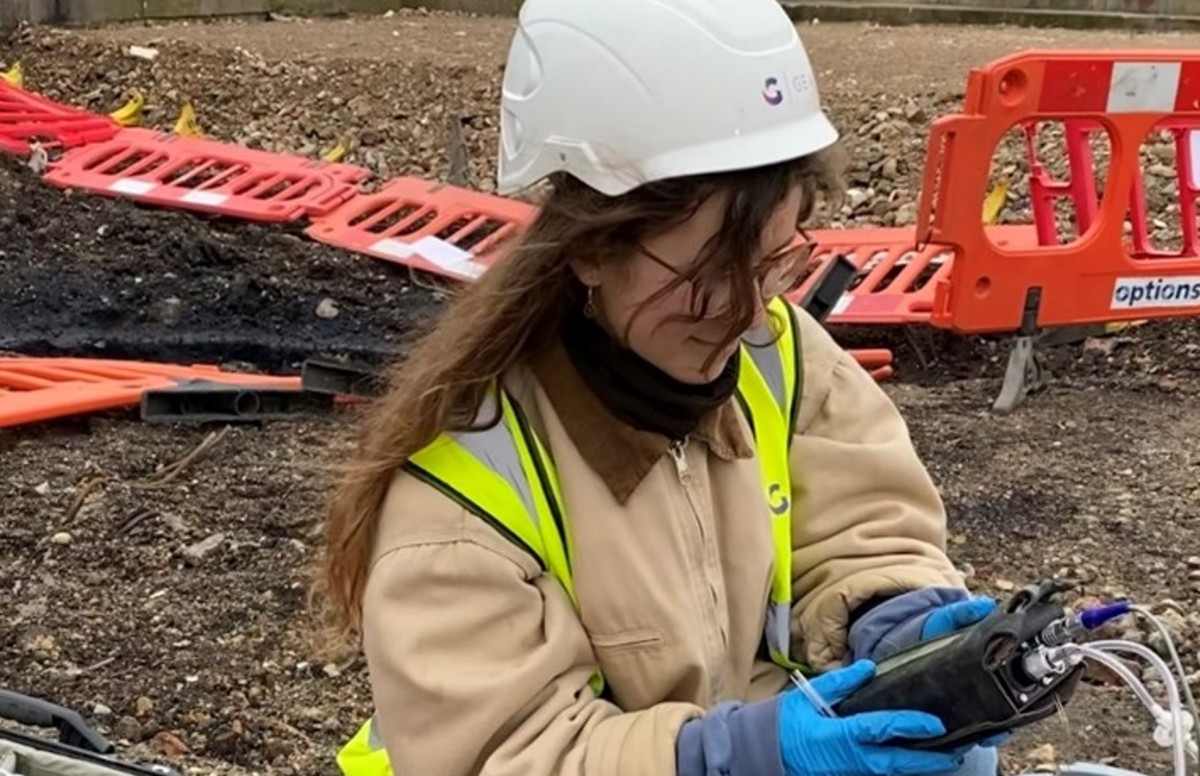Geotheta for Dummies
Geotheta for Dummies
Blog Article
The 20-Second Trick For Geotheta
Table of ContentsOur Geotheta IdeasThe Facts About Geotheta RevealedFascination About GeothetaOur Geotheta Statements
They team up with civil designers, architectural designers, engineers, and various other professionals to incorporate geotechnical factors to consider into the overall project layout and construction procedure. This requires efficient teamwork, sychronisation, and communication to guarantee that the geotechnical aspects straighten with the job goals and satisfy regulatory requirements.Mining & Products Engineering: Principles of drilling, infiltration prices, and elements affecting the option of drilling method. Blasting techniques in surface area and below ground functions. Mechanical and continual approaches to fragmentation, including longwall shearing and fullface boring.
Modelling of piece and bit dimension circulations; comminution as a transfer feature. Comminution innovation: squashing, grinding, dimension classification. Integrated evaluation of fragmentation and comminution procedures. Offered by: Mining & Products Design.
The Ultimate Guide To Geotheta
Bachelor's level programs in civil, geotechnical, geological, and ecological engineering usually last four years and include basic education and learning courses in English, social science, and the liberal arts, along with programs in advanced mathematics, structural geology, and fluid mineralogy. (https://sketchfab.com/geotheta)
Geotechnical design involves the analysis of the dirt and rock conditions at a particular website, and their ramifications for the growth of that website. As most frameworks count on the ground for assistance, it is without shock that an in-depth understanding of the ground conditions, and the viability of foundation systems, are important to the lasting security and performance of the structure or structure.
Being experts in the examination of geological formations and ground practices, geotechnical designers perform clinical investigations and screening to comprehend the influence these geological formations may have on the design and building and construction of structure, civil and infrastructure jobs. This experience is critical for the style and building and construction of structures, roadways, passages, dams, bridges, and water and sewer systems.
The geotechnical group at Douglas Allies consistently speak with engineers, design engineers, developers, and building contractors to make suggestions on layout and growth propositions to make certain that the developed structures are suitably made for the ground problems. For example, the layout of footing systems needs to consider the weight of the framework, the capacity of the ground to support that weight together with activity tolerances and effective building and construction.
The Best Strategy To Use For Geotheta
This job is considerably streamlined by the use our Douglas Map geospatial system that makes this information readily accessible in a simple to make use of web internet browser user interface. A geotechnical designer will guide the drilling of boreholes and test pits to accumulate soil and other examples, and also analyze surface area features and ground exposures to create a geotechnical version of the subsurface conditions.
Relying on the task type and ground problems experienced, laboratory screening may to name a few points examine toughness, compressibility, reactivity and/or permeability of soil and rock samples. Hereafter information is accumulated and collected, the results are made use of for a geotechnical model of the site, which is generally offered as areas across the website.

A geotechnical investigation by nature can only evaluate the ground problems at the places drilled or dug deep into. All-natural variations in dirt and rock conditions can take place across a website and between examination areas. It is as a result good method that the geotechnical designer be retained throughout building and construction of the task to provide on-site verification that the ground conditions run into follow the expectations and recommendations given in the geotechnical examination record.
The smart Trick of Geotheta That Nobody is Discussing
Geotechnical engineers utilize their thorough understanding of soil and rock to examine danger and solve problems on varied facilities projectsGeotechnical engineering is a specialist branch of civil design which considers the practices of earth products and the application of soil and rock mechanics. Geo Tech Engineering. As a geotechnical designer, you will assess the physical, mechanical and chemical buildings of soil and rock in order to design foundations, maintaining structures and earthworks
Geotechnical engineering is very closely connected to and overlaps with, both engineering geology and ground design - http://go.bubbl.us/e3adfd/a28b?/Geotheta. It's feasible to specialise in geotechnics or work for a geotechnical firm yet be understood as a design geologist or a ground engineer. As a geotechnical engineer, you'll require to: construct and preserve connections with clients and various other professionals associated with the site, throughout each projectmaintain security criteria on website bear in mind expense ramifications when you make recommendationsstudy geological maps and airborne photos from a series of sources and from various time periodsexamine building plans to see just how viable they are based upon Consulting Engineer your understanding of the siteinvestigate risks or geological hazards for the sitesearch for ecologically sensitive functions, such as landfill begin to develop valid and expository ground modelsplan field investigationsdrill and analyse examples of bedrock, soil, groundwater and added materials monitor various other professionals on sitesolve technological issues as they arise, such as unanticipated structures at drill sitesmonitor problems during and after building to see to it frameworks are stable in the brief and lengthy termadding information gathered on website to your initial researchcreating geotechnical estimations, drawings, and 2 or three-dimensional computer models interpreting the datamaking recommendations concerning the proposed use the site

Report this page